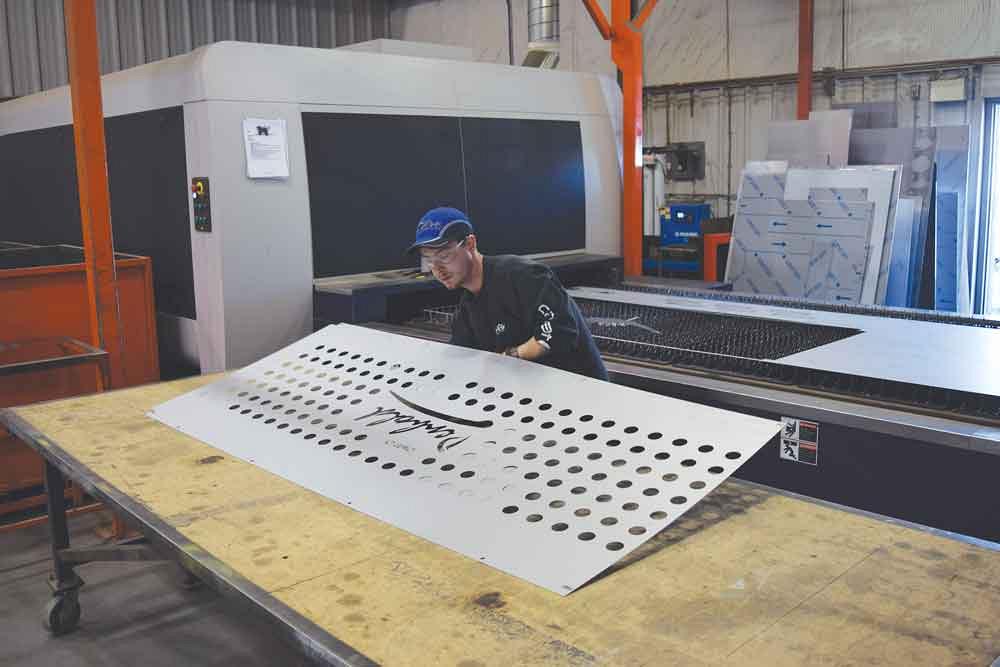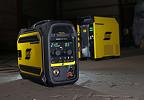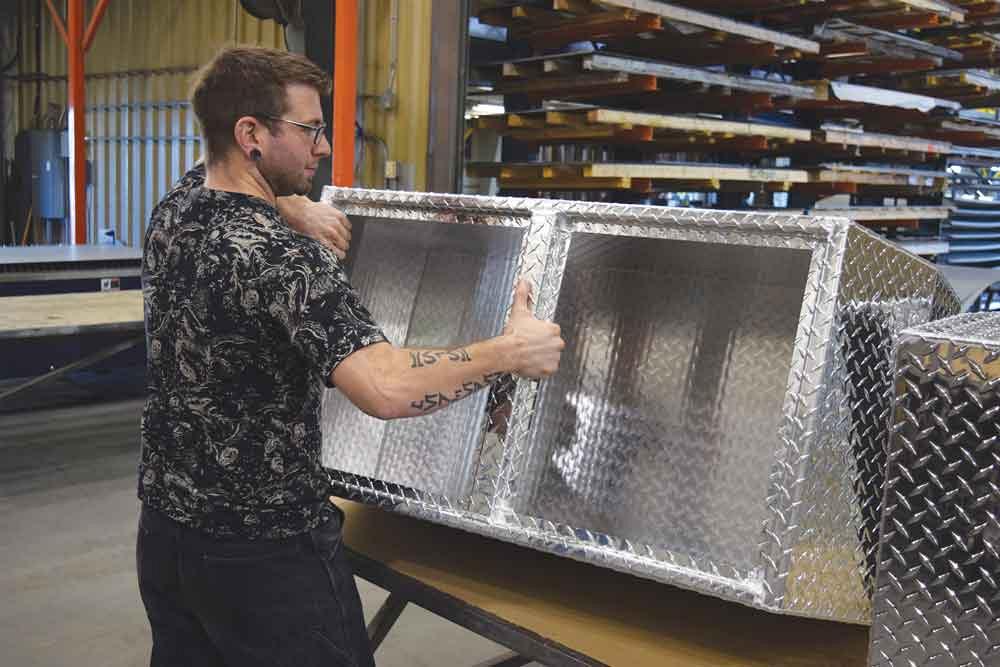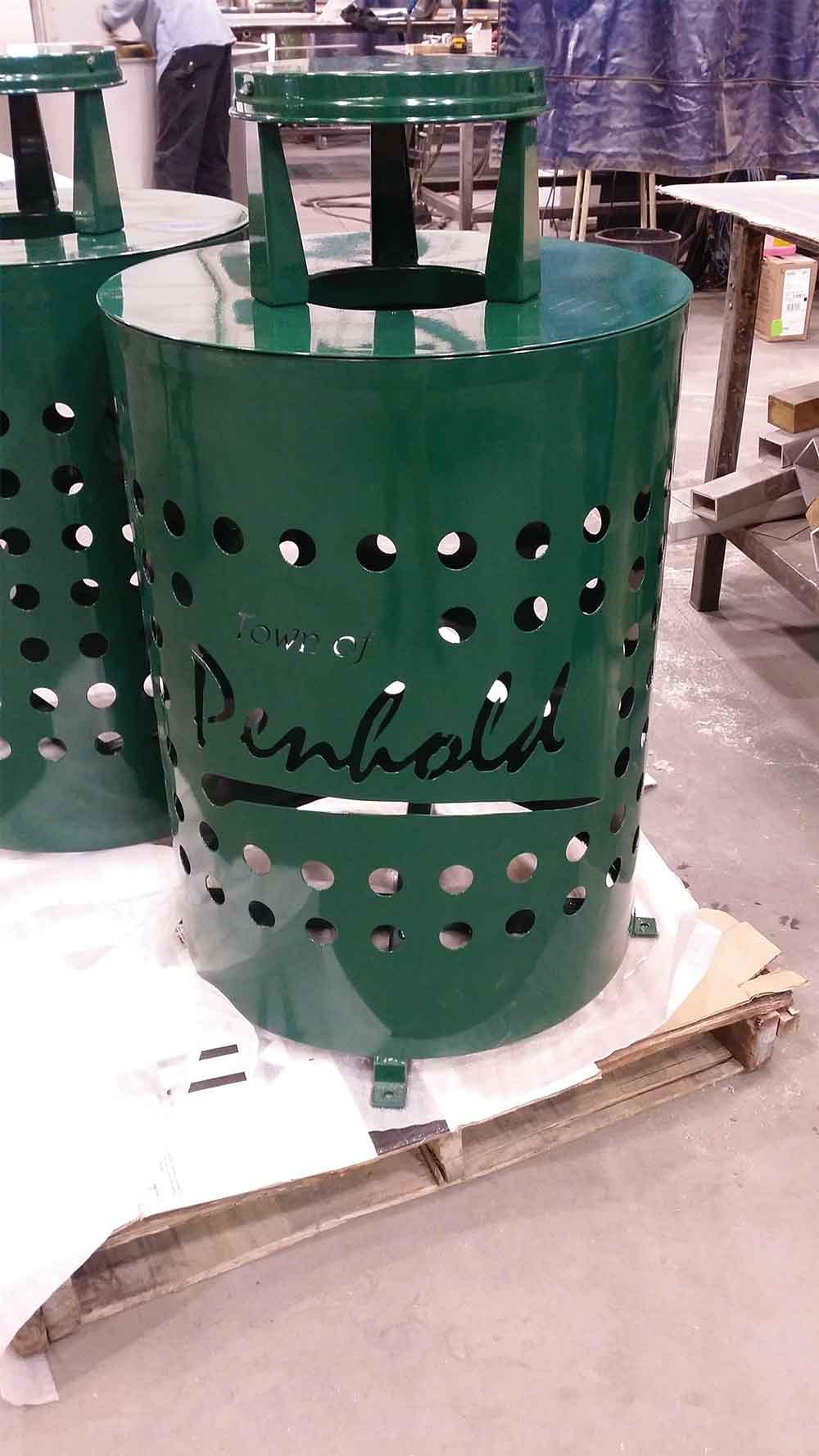Editor
- FMA
- The Fabricator
- FABTECH
- Canadian Metalworking
Business Profile: Hawk Custom Sheet Metal
Hawk stays competitive with laser investment, versatile team
- By Rob Colman
- December 1, 2016
- Article
- Fabricating
Hawk Custom Sheet Metal is a diversified custom sheet metal shop serving a variety of customers in central Alberta. The Red Deer, Alta.-based shop’s customer base includes the food processing, hotel and restaurant, oil and gas, agriculture, commercial and industrial heating and ventilation, and custom fabrication services industries.
Hawk invests fairly regularly in new technology. About two years ago, it installed its first fiber laser, a Bystronic BySprint 3kW fiber laser, and a second press brake. It has benefited from the speed and design capabilities of the laser. But as a visit to the shop attests, it’s the combination of technology and the know-how of the Hawk team that keeps the fabricator successful.
Designing for Fiber
Hawk has been under the proprietorship of Mel and Minnie Steer since June 1995. The company now employs 31 full-time employees in a 13,100-sq.-ft. shop, and it works with a variety of materials, including mild steel, stainless steel, galvanized steel, aluminum, and copper.
Beyond its investment in the fiber laser, the shop is equipped with a ¼-in. by 12-ft. power shear; a 200-ton Bystronic CNC press brake; a 150-ton Bystronic CNC press brake; a 95-ton by 12-ft. power brake; a 25-ton Pullmax CNC punching machine; a 10-ft. by 14-gauge Cidan CNC folder; a tubing roller; and welding machines for GTAW, GMAW, SMAW, and spot welding. The shop also has various sheet metal rollers and formers, as well as a selection of finishing grinders and polishers. Basically, any tool that could be used to finish a part is on the shop floor.
The Pullmax CNC punching machine was the Steer’s first investment in a CNC machine.
“The laser has taken a lot of the work away from that machine,” said Mel Steer. “The fiber laser is our second laser. It replaced a Bystronic BySprint 2.2 kW CO2 laser that we had for six years.”
The biggest difference the Steers and their team have noticed with the fiber laser is the increase in speed.
“The speed difference is particularly great in the lighter-gauge material,” said Randy Mullin, one of three full-time programmers on the Hawk team. “Anything under a 1/4 inch is much faster on the fiber. After that the speeds remain comparable to the CO2 laser on materials thicker than a ¼ in. The majority of our work is 10 gauge and thinner so the increased speeds have been fantastic.”
“The quality of cut on aluminum has been higher on the fiber,” said Steer. “Our utility bills have also been lower, and our consumable costs have dropped. Other than the nozzles, there’s not much that needs to be changed out on the fiber lasers. You don’t have to worry about the alignment of mirrors, and you don’t have the extra laser gases or resonator rebuilds.”
There are also advantages in design parameters. Because they are able to get finer cuts on the fiber laser, the Hawk team has been able to be more creative with some of their designs. For instance, some garbage receptacles being cut during our visit to the shop floor were being designed to click and bolt together like a Meccano set. Cutting with a CO2 probably would have required the job be finished with a more time-consuming weld.
Custom Demands
Mullin also noted that the difference in the controls was negligible.
“Press brake controls have changed much more than laser controls,” Mullin explained. “Programming is where we saw the most difference because we switched from Bystronic’s version 6 to version 7. That was completely different. In version 7, Bystronic has partnered with SolidWorks for their design software, and if you design using that software, it offers a direct interchange with their BySoft proprietary software. We don’t use that because we prefer to use Autodesk®’s Inventer™ because it works better for programming sheet metal parts. Because of this, importing takes longer, but the programming of the part takes less time.”
Like many custom shops, Hawk can’t take complete advantage of all the nesting capabilities of newer fiber laser controls. For instance, some shops will run a sheet only if they’ve got 80 per cent utilization of it. As Mullin noted, that’s just not realistic for Hawk’s diverse custom work. Sometimes the laser will run full sheets for a day or more, but just as often it is running parts for short-run projects.
“To increase our turnaround, we run whatever we can on a given sheet at a given time,” Mullin said. “And we will always nest into the smallest sheet that we can. The judgment of what we use and when is in the hands of our laser operator. Once a week he does an inventory so that he is aware of exactly what is available to him.”
Versatility Advantages
The challenges created by the variety of work the shop does also make it an interesting place to work. The Steers have managed to keep a good, steady core of employees for quite some time now. Mel and Minnie say that it’s partly because of that variety of work the team is able to do on the job. When Canadian Fabricating & Welding visited, several projects were underway – some ductwork for HVAC (which accounts for about 50 per cent of the company’s business, including doing installation work), the laser cutting of garbage receptacles for a local community, and a stainless steel fume hood for a kitchen.
The other important distinction in the way that work is completed at the shop is that once cut parts come off the laser, whoever takes that particular job is then responsible for it until it is complete. That person marshals it through forming, welding/assembly and finishing.
“I think it keeps everyone more versatile here,” said Steer. “The laser is the only machine with a designated operator. In fact, one of our welders even does some of our programming.”
Steer also thinks that the company’s continued investment in new technology keeps people interested.
“The equipment we have certainly makes a difference,” he explained. “As we started acquiring more advanced CNC equipment, our guys really jumped onboard with that. None of them had any experience with that type of equipment before.”
That investment is unlikely to slow down, either. Mullin mentioned that the company is considering investing in a new press brake that they will be able to program from the office, something that wasn’t possible when they bought their first press brake, and a technological advance they haven’t been able to take advantage of yet.
“We could program for our other brakes in the office, but transferring those files to the brakes themselves is more complicated for us than just programming at the machines,” said Mullin. “Introducing that technology to the shop floor will save our team a lot of time.”
What is most important for Mel and Minnie and their team right now, however, is that they remain busy and in demand.

The laser operator removing a cut sheet from the fiber laser table. The kit he cut on the sheet in this case is for a trash receptacle for a local community. With the fiber laser, Hawk was able to design this kit in such a way that it can be assembly more easily.
Editor Robert Colman can be reached at rcolman@canadianfabweld.com.
Hawk Custom Sheet Metal Ltd., 403-340-8010, www.hawksheetmetal.com
Bystronic Inc., 800-247-3332, www.bystronicusa.com
About the Author

Rob Colman
1154 Warden Avenue
Toronto, M1R 0A1 Canada
905-235-0471
Robert Colman has worked as a writer and editor for more than 25 years, covering the needs of a variety of trades. He has been dedicated to the metalworking industry for the past 13 years, serving as editor for Metalworking Production & Purchasing (MP&P) and, since January 2016, the editor of Canadian Fabricating & Welding. He graduated with a B.A. degree from McGill University and a Master’s degree from UBC.
Related Companies
subscribe now


Keep up to date with the latest news, events, and technology for all things metal from our pair of monthly magazines written specifically for Canadian manufacturers!
Start Your Free Subscription- Trending Articles
CWB Group launches full-cycle assessment and training program

Achieving success with mechanized plasma cutting

3D laser tube cutting system available in 3, 4, or 5 kW

Brushless copper tubing cutter adjusts to ODs up to 2-1/8 in.

Welding system features four advanced MIG/MAG WeldModes

- Industry Events
MME Winnipeg
- April 30, 2024
- Winnipeg, ON Canada
CTMA Economic Uncertainty: Helping You Navigate Windsor Seminar
- April 30, 2024
- Windsor, ON Canada
CTMA Economic Uncertainty: Helping You Navigate Kitchener Seminar
- May 2, 2024
- Kitchener, ON Canada
Automate 2024
- May 6 - 9, 2024
- Chicago, IL
ANCA Open House
- May 7 - 8, 2024
- Wixom, MI



















